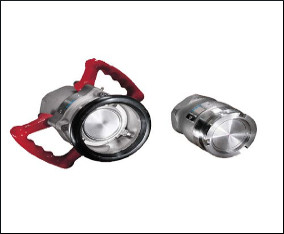
Dry break coupling, also known as dry disconnect coupling, is a fitting that offers advanced fluid handling solutions. They are used where accidental spillage of liquids is not acceptable due to health regulations and environmental concerns. Moreover, it is used when the value of liquids is too high to tolerate any spillage or loss. Dry disconnect couplings are easy to operate. You just open and close the valves using the handle on the device to control the flow of the liquid in the lines.
Why is dry break better than standard disconnecting fitting?
Dry break coupling is more superior to other couplings because it does not allow any spillage. Therefore, this device is ideal for applications that demand non-spill connections. Therefore, this is the perfect choice for most industrial applications.
How to choose the best dry break coupling?
There is a wide variety of dry-break couplings in the market so choosing the right one is a daunting task. Here are some of the things to consider while looking for the best dry-break coupling to meet your needs.
Valve type: you can choose from the ball, poppet or butterfly valves. The type of valve affects the flow rate of the dry break coupling.
Acceptable level of spillage: this will vary depending on the application and the environment. Therefore, you should consider how critical the acceptable level of spillage is to your application.
Weight and size: this is an important consideration to the operator. The weight should be bearable if the hose is to be frequently used. Moreover, the size of the drybreak coupling should match that of an intermediate bulk container.
Ease of operation: the position of the connection may make one type of dry break coupling more suitable than others.
Ability to prevent cross contamination: making accidental connections to wrong hose line can lead to severe consequences. Therefore, choosing a dry break coupling fitted with sensors will prevent cross contamination from happening.
Safety: accidental disconnections can cause harm to the operators and the environment. Therefore, dry disconnect coupling fitted with mechanical interlock ensures that no disconnection is possible if the valve is open.
Pressure drop: some dry break couplings result in pressure loss if they are connected with the existing coupling on the site. Therefore, your dry disconnect coupling should not mate with the existing fittings on the site.
Dry break coupling is very useful for applications where spillage of fluids cannot be tolerated. It will prevent not only the loss of fluids but also protect the environment. The above tips will help you choose the perfect dry break coupling for your applications.


Leave a Reply